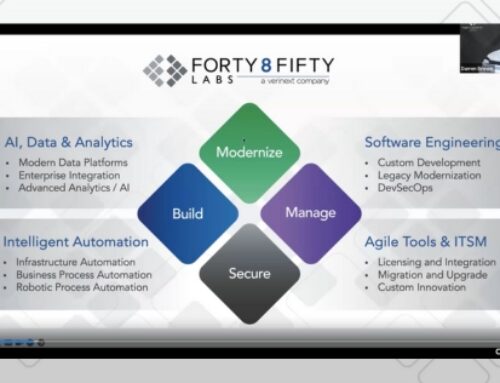[cherry_row]
[cherry_col size_md=”12″]
How the Red Hat PaaS Solution is Empowering Developer Innovation
When it comes to DevOps, simplicity, automation and speed are the keys to innovation.
It’s exactly these three value propositions that are inherent in Red Hat OpenShift 4.3, an expanded Platform-as-a-Service (PaaS) that is optimized for rapid application development and deployment for organizations implementing a Kubernetes infrastructure. It uses containers to help developers get apps to market faster, while increasing developer productivity, operational efficiency and hardware usage.
What’s all the fuss? OpenShift 4.3 makes cloud-native technologies easier to use and more accessible for developers through automated, containerized, set-up and management features for Kubernetes environments. The result? Developers can focus on building next-generation enterprise applications, without the need for deep Kubernetes expertise. How? It provides users with ready-to-use developer services that address needs around service mesh, serverless execution and cloud-native continuous integration/continuous deliver (CI/CD) pipelines. All which help to fuel developer productivity.
Released in January, OpenShift 4.3 adds some particularly valuable new features to support innovation throughout the application development lifecycle. Specifically for developers building cloud-native applications or lifting and shifting legacy applications, Red Hat OpenShift Container Storage 4 accelerates application development workflows through:
- Optimization with Red Hat OpenShift Container Platform, enabling developers to dynamically provision their own storage from within the platform without requiring storage expertise.
- Easier deployment and greater automation through Rook’sstorage orchestration capabilities. With the Rook.io Operator, developers have Kubernetes-native, automated support for easier deploying, packaging and expansion of storage on Red Hat OpenShift.
- Faster persistent volume creation, helping developers build, test and release applications faster by reducing build times and improving continuous integration/continuous deployment (CI/CD) pipeline efficiency.
The latest release also supports enhanced data security for cloud-native applications by bringing expended data protection features, such as encryption, anonymization, key separation and erasure coding. Using the Multi-Cloud Object Gateway, developers can share and access sensitive application data in a more secure and compliant fashion across multiple geo-locations and platforms.
Based on Red Hat Ceph Storage, Red Hat OpenShift Container Storage 4 also provides users the scalability and enhanced security needed for emerging workloads across multi-cloud environments, such as artificial intelligence (AI), machine learning (ML), SQL, NoSQL and other data-intensive workloads. As the only storage Operator in the embedded OperatorHub that supports file, block and object storage, Red Hat OpenShift Container Storage 4 uniquely provides OpenShift customers an integrated cloud-native storage solution, designed to support both traditional and emerging workloads.
For more information around Red Hat’s OpenShift platform, check out our latest podcast.
[/cherry_col]
[/cherry_row]





